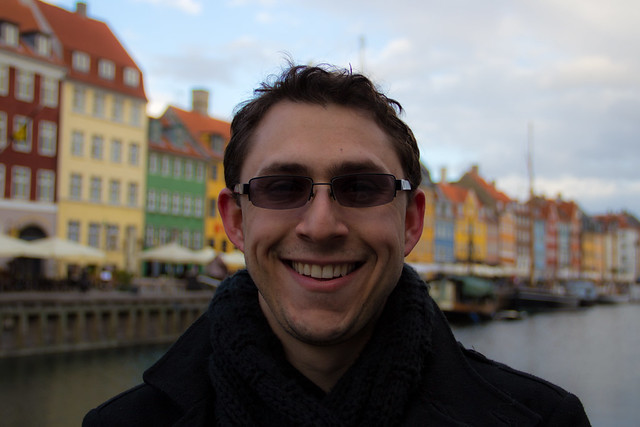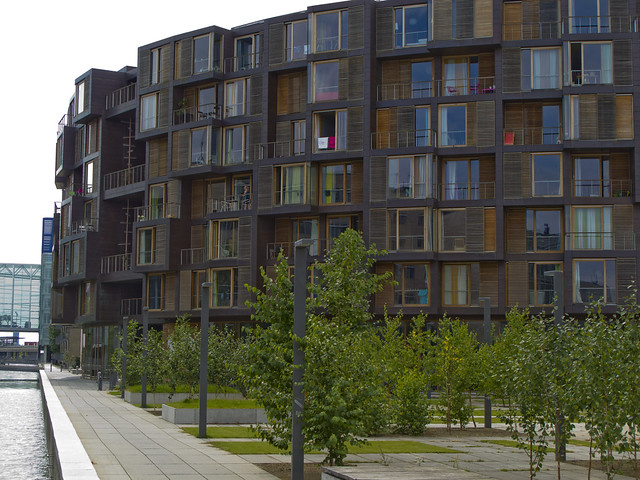It’s one of the fundamental but often overlooked or ignored pleas that international students make. As a full degree student (someone doing an entire MA program here in Denmark) one of my biggest concerns and top priorities was to break free of the international student bubble that defines most study abroad experiences. In short, when coming to Denmark, I really wanted to make sure I made Danish friends, ate Danish food, and even gave Danish fashion a go. Don’t get me wrong, I LOVE my fellow international students and spend a majority of my time with them – but the core of my experience as an international student in Denmark is, and will continue to be, shaped by how I engage with Danes and Denmark as a whole.
The challenge is that key aspects of how international students are treated and supported by local universities fundamentally set international students up to remain isolated. This past week a great article was published introducing a new International Student City being planned, pitched, and pursued for Copenhagen. The ISCC as it will be called is really exciting. In fact, it’s a project I’d love to get involved with. It is something that Copenhagen needs and it is something that has immense potential to dramatically improve student life and student experiences here in Copenhagen. Unfortunately, as it is currently structured, it also includes elements which will essentially double down on Copenhagen’s current issues.
It all starts with housing
There’s not enough student housing in Copenhagen, for anyone. Danes struggle with it in a major way and face many (but far from all) the hardships that international students face. Of the student housing that is available a lot of it is isolated and far removed from the University’s centrally located campuses. While Danes typically know how the system works and are able to apply to the various waiting lists relatively early on, international students often find themselves last in the queue for dorms and are forced by necessity into the city’s least desirable student housing. These dorms are often over-priced and/or located in suburbs, most of which are 30-50 minutes outside the city. Other dorms or private kollegiums around the city have low international quotas and/or don’t take international students at all. These often have in-depth application processes and are impossible to get into during the first 6-8 months of your student career.
While everyone wants to be centrally located, it is absolutely essential for international students. These students need the immersion that comes with being a short walk from events and situated in the heart of a city’s nightlife, café life, and overall experience. This is particularly important during the first months when habits, friendships, and lifestyle are formed. Having a 40-minute commute each way discourages students from meeting for casual coffees, doing spontaneous events, and attending cultural activities. It leaves one holed-up in a room, on the computer talking to friends back in your home country, disengaged and detached from the culture you’re ostensibly here to experience.
It’s important to remember that as a full degree student you arrive in a foreign country, in a city you know nothing about, where you have no friends, and where you have minimal support. For me, the sum total of my time in Denmark before my MA program began was three days. Those first few months were rough. Classes hadn’t started yet. It was hard to make myself go out. It was lonely and I was isolated. When I couldn’t take it anymore I’d go out to the bars alone and desperately try and strike up conversations with total strangers. I know it was the same for a lot of my fellow students and I know that it can be a real deal-breaker for many people. It hurts your grades, it hurts your health, and it can be brutally rough.
Those of us who knew that living in a central location was essential were forced to explore renting private apartments. This came with the trade-off that we had to forgo the fun, immersion and community of a rich dorm experience. It quickly devolves into an either or situation, when what students really need is a combination of the two. No easy task given that Copenhagen has an extremely abusive rental market. Danes are lovely. Many Danish landlords, however, are not.
While my female friends have had an easier go of it, as a male international it is extremely difficult to find housing in Copenhagen. There’s very high demand for places and, just as in other parts of the world, people either look at an international student as extremely desirable or extremely undesirable. There’s not much middle ground and unfortunately, most landlords seem to lean towards the latter. That’s common enough and nothing can really be done about it. Where it really gets frustrating, however, is the approach taken by many landlords who will rent to international students. These individuals provide rooms for rent but those rooms come with a wide range of ridiculous rules and restrictions. It’s not uncommon that they’ll rent a room but prohibit or restrict access to the kitchen or common spaces. They’ll ban renters from having guests over or require them to gain previous approval. To be clear here, I’m not talking about raging parties. I’m talking about having a single friend over or quiet dinner. These landlords exploit their renters as a revenue source to supplement their income but are unwilling to grant them most of the basic rights and access you would and should receive as a renter.
The whole issue is magnified because many also demand 3+ months of rent in advance as a deposit which more than a few will later try and confiscate as an added bonus knowing that it’s difficult for international students to follow up or take legal action. Other landlords provide subleases which are off the books and in turn allow them to collect rent without declaring it to the government. International students make easy targets because they don’t know their rights, how the system works, or what is normal.
International Student Housing
This would all seem to point to an easy solution which ISCC seems to be pursuing: Create a sprawling student complex situated in a fairly central part of Copenhagen that is designed for, and limited predominantly to, international students. The idea is spot-on in several ways – they’ve noted it has to be right next to a metro stop, it needs to be central, and it should provide a variety of services to improve student life.
Unfortunately, however, the entire structure seems to revolve around creating what will quickly become a completely insulated international mini-city in the heart of Amager. The article notes:
“The plan is that different nations would build their own student houses for at least 100 students within the student city. The building designs should reflect the nation’s architectural traditions and the idea is to have an exchange agreement among the various international houses. Half of the students from each individual country will stay in their own ‘national’ house, will be spread among the other houses in an effort to mix cultures and traditions together.”
Which sounds great on paper but is unfortunately an absolutely disastrous idea! Not only would the ISCC be isolating international students from their Danish counterparts but, they’d be isolating them from each other.
International students inevitably tend to slip into comfortable cultural groups. East Asian students congregate together, as do Indian students, European Latins and Hispanic/South Americans. Typically there is another block of Central and Eastern Europeans while English-speaking Europeans, North Americans, Australians, Scandinavians, and New Zealanders also form a large block. Cross germination occurs but it is usually limited. While the idea behind the split cultural dorms is probably meant to help bridge this, the reality is it would more than likely just re-affirm and strengthen it.
What’s the answer then? Prioritization and integration. The ISCC needs to be a fully incorporated student city, not just an international student city. At least 30% of the students living in the dorms and on the facility need to be Danes. More importantly though, the entire structure needs to revolve around how, at a very basic level, students can be better integrated.
International students need to have prioritized access but not exclusive access. Full-degree and PhD students need to have first priority, with year-long exchange students next in line, followed by short term/semester students with roughly the same priority and access as Danish students.
It is important for organizers to remember that students on short term exchange are often provided with a group of peers all arriving at roughly the same time and have significantly more resources, support, and access to existing infrastructure than long term and full-degree students.
Concepts like International or Danish dorm floors should be avoided as should reinforcing cultural segregation. It’s important to keep in mind that cultural exchange occurs by simply sharing each other’s company. Attempting to force it only builds barriers. However, things like restaurants, shops, or themed-facilities created for general use are great and fun ways to explore culture in a more subtle fashion.
Organizers must keep in mind that rental rates for any project of this nature need to be competitive. I know students paying more than 5,000 DKK for a dorm room which is absolutely ridiculous and extremely detrimental in its own way…especially when compared to the 1,500-2,500 DKK being paid by many Danish students in Kollegiums around the city.
Beyond Just Housing
While a huge aspect of the ISCC concept revolves around housing, and that is what this post has focused on, another key issue that Danish universities need to review in-depth is the way they segregate classes and social events. I realize that funding is an issue and that in some ways English-based university courses are provided as an added value service BUT the reality is that if more engagement and immersion is the goal, you have to allow Danish and International students to interact.
I’ve repeatedly seen courses at KU where despite an expressed desire and eagerness to take courses in English, Danish students have been told they need to/are only allowed to take lectures and courses in Danish. In a recent media course I took, the group lecture was provided in English with three seminar courses offered. Of these two were in Danish (though taught by faculty fluent in English) and the third was taught in English. Danish students were forced to take the group lecture in English and then prohibited from taking the English seminar which was essentially limited to international students.
Academic and administrative organizational issues of this nature mean that throughout our academic career, international students are fundamentally segregated from Danish students and deprived of many of the most opportune and vibrant socialization and networking opportunities.
A Great Idea
As the article notes, there are 18,000 students in Copenhagen this year and they have a goal of growing that figure to 30,000 by 2025. If Copenhagen is serious about the ISCC (which I hope it is!), it is important that key steps are taken that not only provide infrastructure that sounds viable on paper, but which actually fulfills students’ needs. This is especially significant if Denmark wants to retain some of that expertise moving forward and if the country is serious about realizing many of the benefits that a vibrant and well-integrated student population can provide.
Have thoughts or experiences of your own that would help the discussion? Please share them in a comment.

